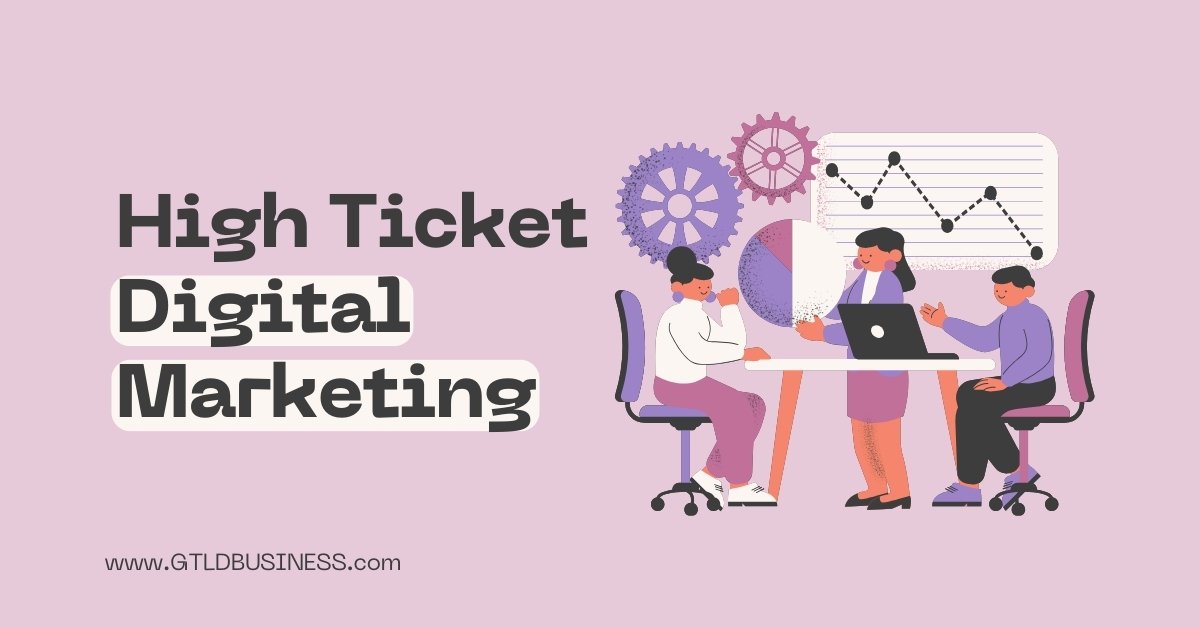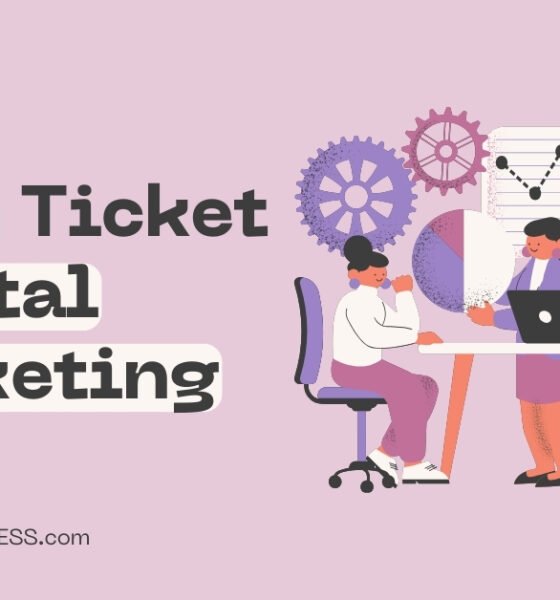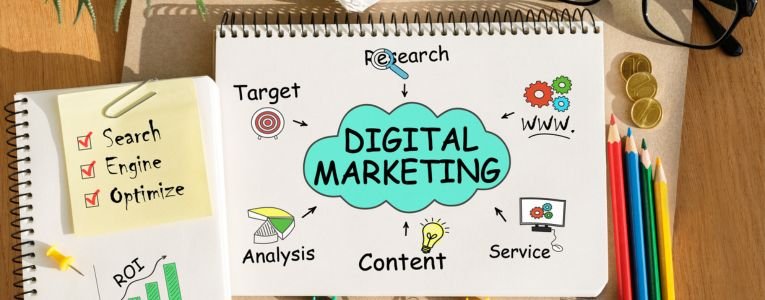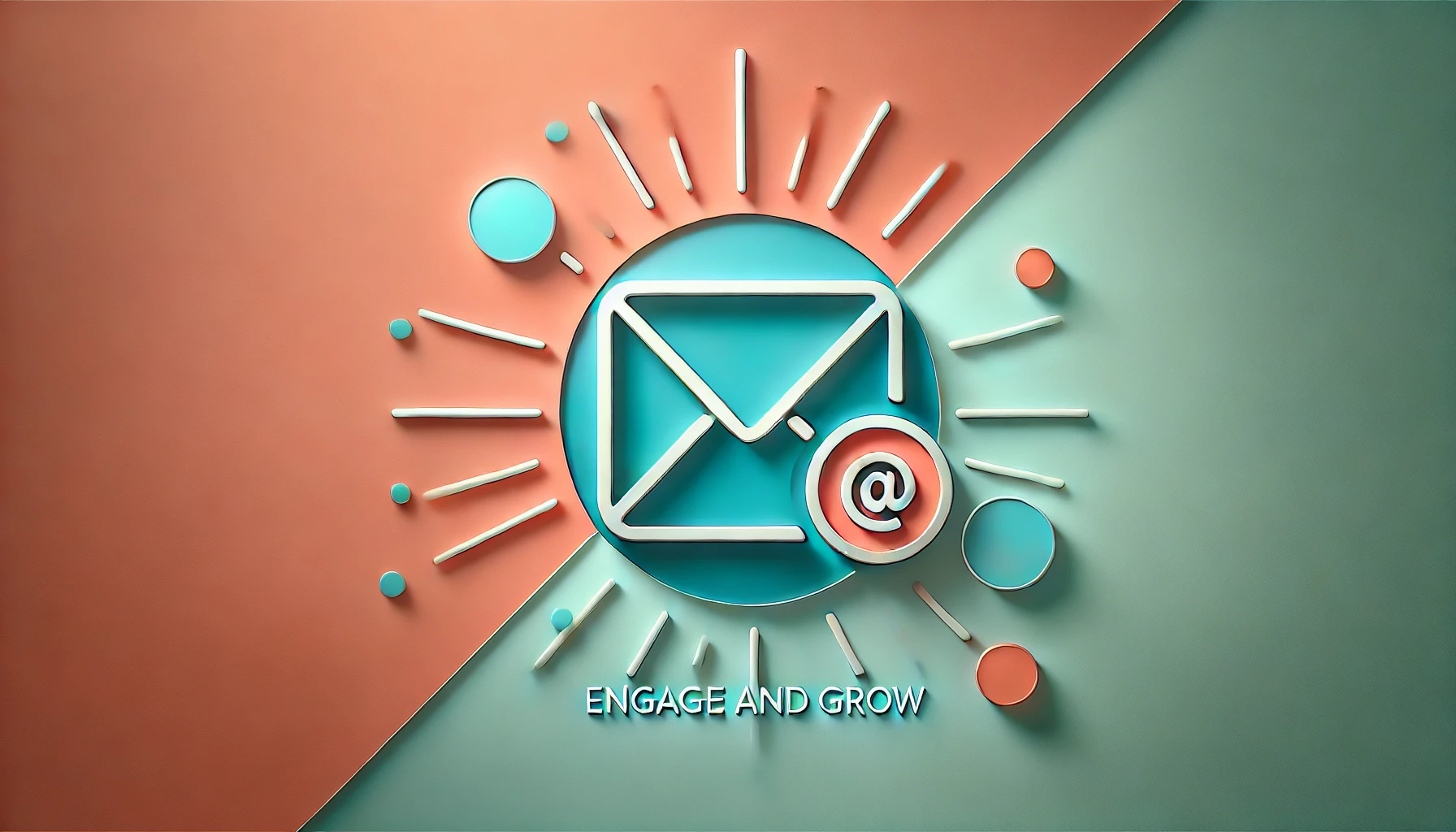

Digital Marketing
What is High Ticket Digital Marketing?
Have you ever tried to sell products? Did you notice that cheap price products give you profit less, while high price products give you profit a lot? High Ticket Digital marketing is the concept of selling high-priced products. In this article, we will completely explore High Ticket Digital Marketing. And its other aspects.
What is High Ticket Digital Marketing?
Contents
- 1 What is High Ticket Digital Marketing?
- 2 How to start High Ticket Digital Marketing?
- 3 What is High Ticket Affiliate Marketing?
- 4 How do I start High Ticket Affiliate Marketing?
- 5 Is High-Ticket Digital Marketing Legit?
- 6 High-Ticket Digital Marketing products
- 7 Frequently Asked Questions (FAQS)
- 8 Conclusion
High Ticket Digital Marketing is the act of selling online high-cost prices products or services. These products or services are usually expensive. If you sell hundreds of low price products you will earn pennies while selling some high-priced products can give you a lot of profit.

In High Ticket Digital Marketing you must be an expert and experienced in your niche, users require trust to buy high-ticket items while in low price products, users mostly agree to risk their money but in high-ticket items, you need to convince them that it is okay to buy the product from you.
How to start High Ticket Digital Marketing?
When you want to start your journey in high ticket digital marketing, firstly, you need to select your niche, selecting a specific niche is most important because when you want to create a brand to sell high ticket items you can’t work multiple niches, High Ticket Digital Marketing Niches contains costly products and services like cars, Jewellery items, Electronics, Software & Marketing programs, Expensive Metals, etc.

Secondly, you need to create your landing page. If you can create a website it will be great to make a feel of the brand. Also, you can create a Facebook page, Instagram, and Twitter account.
Thirdly, You need skills and experience in digital marketing, because without digital marketing and e-commerce, it is nearly impossible to get success in an online store. If you don’t have skills in digital marketing and e-commerce don’t worry, our blog GTLD BUSINESS mostly writes about Digital Marketing and e-commerce like our recent article What is Digital Marketing? A Complete Guide of 2024.
Lastly, You will need a high budget for buying high-ticket items, this budget should be separate because buying high-ticket items can be high risk so your mind should be set to handle the loss. By using these strategies you need to create customer trust. If you won the trust it means you won the game.
What is High Ticket Affiliate Marketing?
High Ticket Affiliate Marketing is the same concept as High Ticket Digital Marketing but the difference is in affiliate marketing risks becoming less than digital marketing because in affiliate marketing you are promoting products of others so you will not need to buy those you just need to promote products.
Do you remember? I was talking about building trust, in high ticket affiliate marketing you don’t need the trust of customers, you don’t need to handle billing problems, you just need to promote products or services to customers. If you want to explore more about affiliate marketing I have recently written on High Ticket Affiliate Marketing for Beginners, you can explore it more.
How do I start High Ticket Affiliate Marketing?
To start High Ticket Affiliate Marketing you need to sign up for affiliate programs on your chosen partner, you can become an affiliate of Amazon, AliExpress, eBay, etc. The System of affiliate marketing is quite different from digital marketing.

In Affiliate Marketing You will not need to buy products and handle the shipping. Everything will be handled by your affiliate partner you will just need to to promote the products using social media marketing, blog websites, and email marketing.
Is High-Ticket Digital Marketing Legit?
Yes, High-Ticket Digital Marketing Legit. There is no scam in high-ticket digital marketing, everything will be in your control. It can be risky like not being able to sell products or services. To do high ticket digital marketing but it can not be a scam because everything will be under your control.
High-Ticket Digital Marketing products
High-ticket digital Marketing products mostly refer to premium or expensive services, courses, and products.

Here are some examples: Advanced Marketing Courses, Marketing Automation Software, Consulting Services, Enterprise-Level Marketing Tools, Exclusive Mastermind Groups, Done-for-You Marketing Services, and Virtual Events and Conferences.
Frequently Asked Questions (FAQS)
What qualifies as a high-ticket item?
High-ticket items are typically expensive products or services that often command prices well above the average consumer purchase, such as luxury watches, high-end cars, yachts, or educational courses costing thousands of dollars.
What are the benefits of High Ticket Digital Marketing?
The Benefits of High Ticket Digital Marketing are by building trust you will get loyal customers who will buy products or services repeatedly and you will get a high return on investment (ROI).
What are the challenges of High Ticket Digital Marketing?
Maybe You get bored by reading to build trust but it is one of the biggest challenges in high ticket digital marketing in my opinion. Also maybe you face high competition in ranking.
Conclusion
In this article, you have learned that high-ticket digital marketing is be most profitable digital marketing, but it is also challenging it is not necessary to start high-ticket digital your sales should start from the first day or week you have to work consistently, and be motivated until you start getting sales, Thanks for reading, we will back soon with another topic.
Digital Marketing
How to Overcome Website Proximity Bias: Strategies for a More Inclusive Digital Experience in 2024

How to overcome website proximity bias is a crucial topic for businesses aiming to enhance their digital presence. Website proximity bias refers to the tendency of web algorithms and design features to prioritize content, ads, or information based on geographical closeness, sometimes at the cost of user experience and inclusivity. Overcoming this bias is vital for businesses that want to reach diverse audiences and ensure their platforms are fair, accessible, and user-centric. This article explores actionable strategies to address and mitigate website proximity bias effectively.
What Is Website Proximity Bias?
Contents

Website proximity bias occurs when digital platforms favor content or services based on the user’s geographical location. While this can sometimes be helpful, it can lead to unintended discrimination or unequal access to information. For example, e-commerce websites might show local stores or ads to users based on their proximity, potentially ignoring more relevant options that are further away. This bias can also manifest in content recommendations, search engine results, and online advertising.
Why Overcoming Website Proximity Bias Matters in 2024

In 2024, with the rise of global digital platforms, it’s more important than ever for businesses to ensure their websites provide equal access to information, services, and products. Biases, including those based on location, can harm brand reputation, limit audience reach, and lead to legal implications, especially as global regulations around digital inclusivity tighten. Understanding how to overcome website proximity bias can help businesses build trust and engage a broader audience.
How to Overcome Website Proximity Bias: Effective Strategies

1. Implement Geo-neutral Algorithms
One of the first steps to overcoming website proximity bias is to use geo-neutral algorithms. Instead of solely relying on proximity to determine what content to display, algorithms can incorporate other factors such as user preferences, behavior, and historical data. This can provide a more personalized experience without overemphasizing the user’s geographical location. For instance, search engines can be programmed to consider the relevance of content to the user rather than just their physical proximity.
2. Optimize for Remote and Hybrid Users
With the trend of remote work continuing to rise, businesses must cater to users who may not be in a fixed location. Platforms like ClickUp highlight the importance of inclusive digital environments for hybrid and remote teams. Ensuring your website does not favor local content excessively allows remote users to access the same quality of services as those in your vicinity. This can involve diversifying content recommendations and using broader ad-targeting strategies.
3. Use Data-driven Insights to Avoid Bias
Leverage data analytics to understand your audience better and reduce bias. By analyzing user behavior and preferences, companies can detect patterns that might indicate proximity bias and adjust their strategies accordingly. For example, data can reveal whether certain demographics or regions are consistently underrepresented in search results or recommendations, prompting a reassessment of how content is prioritized.
4. Develop a Transparent Content Prioritization Policy
Transparency is key when overcoming biases in digital platforms. Develop a clear policy on how content is prioritized and share it with your audience. This approach not only builds trust but also encourages user feedback, which can be invaluable for refining algorithms. Businesses like BetterUp have emphasized creating inclusive digital practices that foster open communication and transparency, which can be applied to website management as well.
5. Enhance User Experience with Customization Options
Allow users to customize their experience on your website. Providing options for users to set their own preferences, including location settings, can help minimize the impact of proximity bias. This customization empowers users to control the content they see and reduces the likelihood of missing out on relevant information just because it isn’t geographically close.
Case Study: How Businesses Are Tackling Proximity Bias

In 2024, several companies have made strides in addressing digital biases. For example, e-commerce platforms have begun using machine learning models that weigh customer preferences more heavily than location data, thus offering more diverse product recommendations. This trend aligns with efforts by global companies to promote diversity, equity, and inclusion (DEI) across all digital channels. Businesses that prioritize inclusivity in their algorithms and design choices are likely to see higher user engagement and better customer satisfaction.
Tools and Technologies to Help Overcome Website Proximity Bias

1. AI and Machine Learning Models
AI can be used to analyze vast datasets and identify patterns of bias. By using machine learning models that learn from user interactions, businesses can create more adaptive algorithms that focus on relevance rather than mere proximity. Companies that utilize these advanced technologies can offer personalized experiences without succumbing to proximity bias.
2. Accessibility and Inclusivity Audits
Regular audits can help identify areas where proximity bias might be affecting the user experience. These audits should include accessibility checks to ensure that content is available and easily navigable for all users, regardless of location. For example, Tango Analytics provides insights on how digital platforms can ensure compliance with diversity, equity, and inclusion goals, which includes minimizing biases like proximity.
3. Feedback Mechanisms and User Testing
User feedback is essential for identifying and correcting biases. Businesses should establish regular user testing and surveys to gather insights on how their platform is performing. This data can be instrumental in tweaking algorithms to reduce bias. When users feel heard and see that their feedback leads to real changes, they are more likely to stay engaged and loyal.
Conclusion
Overcoming website proximity bias is not just a technical challenge but a strategic necessity for businesses in 2024. As the digital landscape becomes increasingly global, ensuring fair and unbiased content delivery can help businesses build stronger, more inclusive connections with their users. By implementing geo-neutral algorithms, optimizing for remote users, and using data-driven insights, companies can create websites that serve all users equally and fairly. This proactive approach will be essential as digital inclusivity becomes a standard expectation across the world. For more insights on enhancing digital strategies, explore Cache Speeder for HTML Counter on GTLDBusiness, which offers useful tools for optimizing website performance.
Digital Marketing
How to Generate Organic Visits for Google Business Profile? Make Amazing Improvements in 2024

In today’s competitive digital landscape, generating organic visits for Google Business Profile is essential for businesses looking to increase their local visibility and attract new customers. Optimizing your Google Business Profile (GBP) ensures that potential customers can easily discover your business through search queries, Google Maps, and other local search tools. This article provides actionable strategies for improving your GBP performance and helping you generate organic visits for Google Business Profile effectively in 2024.
Introduction: The Importance of Organic Traffic for Google Business Profile
Contents
- 1 Introduction: The Importance of Organic Traffic for Google Business Profile
- 2 Key Strategies to Generate Organic Visits for Google Business Profile
- 3 Leverage Keywords and Local SEO
- 4 Use Analytics to Track and Improve Organic Traffic
- 5 Enhance Visibility with Link Building and Local Citations
- 6 The Impact of Mobile Optimization
- 7 Conclusion

Generate organic visits for Google Business Profile as part of a strong local SEO strategy to boost visibility and attract more customers. GBP listings appear at the top of search results for relevant queries, giving businesses a competitive edge. With no direct advertising costs involved, generating organic visits for Google Business Profile ensures businesses reach potential customers without relying on paid campaigns.
Optimizing your GBP listing helps you gain visibility in Google’s local pack, which boosts both online and in-store visits. A well-maintained profile ensures customers can easily access important information, increasing engagement and conversions.
As highlighted by GTLD Business in the article “Shopify SEO Tips: How to Amazingly Optimize Your Store for Success,” “Increase Organic Traffic: Optimized stores are more likely to appear on the first page of Google, attracting more visitors without the need for paid campaigns.” This principle applies directly to GBP optimization, where an optimized and frequently updated profile ensures better visibility and engagement.
Additionally, according to Semrush, essential practices like managing customer reviews, adding local keywords, and updating your profile regularly are key to maintaining visibility in local search environments. These strategies help businesses stay competitive by driving organic traffic consistently.
Key Strategies to Generate Organic Visits for Google Business Profile

1. Complete and Optimize Your Google Business Profile
- Fill out every section of your GBP, including business name, category, address, phone number, website URL, and business hours.
- Ensure your information is consistent across all platforms to avoid confusion and improve SEO.
2. Use High-Quality Photos and Videos
- Upload professional photos that showcase your products, services, and premises.
- Regularly update your media to keep your profile fresh and engaging.
3. Encourage Customer Reviews and Respond to Them
- Positive reviews improve your GBP’s visibility and encourage new customers to visit.
- Respond to every review, whether positive or negative, to show that you value customer feedback.
4. Post Regular Updates and Offers on GBP
- Use Google Posts to share announcements, promotions, and events.
- These posts appear in your profile and help engage both new and returning customers.
Leverage Keywords and Local SEO

- Incorporate Local Keywords:
- Use relevant keywords in your GBP description to improve visibility for location-based searches.
- Keywords like “best bakery in [city]” or “affordable IT services near me” enhance your chances of appearing in the local pack.
- Enable Location-Based Attributes:
- Attributes such as “women-owned” or “pet-friendly” help your business stand out and attract targeted audiences.
- Add FAQs to Your GBP
- Including common questions and answers helps you rank better in local search results and provides quick information to potential customers.
Use Analytics to Track and Improve Organic Traffic

- Monitor Insights in GBP:
- Use the Insights tab to track customer actions, views, and search queries.
- Analyzing this data helps you refine your strategy and focus on what drives the most traffic.
- Track Calls and Directions Requests:
- Pay attention to the number of calls and directions requests your profile receives to measure its effectiveness in attracting customers.
Enhance Visibility with Link Building and Local Citations

- Build Local Citations:
- List your business on local directories such as Yelp, TripAdvisor, and industry-specific platforms.
- Obtain Backlinks from Local Partners:
- Collaborate with local businesses or organizations to acquire high-quality backlinks to your website, which improves GBP rankings.
The Impact of Mobile Optimization

Since most GBP interactions happen on mobile devices, ensuring your profile is mobile-friendly is critical.
- Ensure Clickable Elements: Make phone numbers and directions clickable to improve user experience.
- Optimize for Voice Search: Many users rely on voice search for local queries. Focus on conversational keywords like “Where is the nearest coffee shop?”
Conclusion
Generating organic visits for Google Business Profile requires a well-rounded strategy that includes optimizing your profile, engaging with customers, and monitoring performance. By incorporating local keywords, encouraging reviews, and posting regular updates, businesses can improve their visibility and attract more organic traffic.
As GTLD Business suggests, focusing on SEO principles is crucial: “Optimized stores are more likely to appear on the first page of Google, attracting more visitors without the need for paid campaigns.” The same holds true for GBP listings, where organic traffic drives meaningful engagement and business growth.
Digital Marketing
The Power of Shareable Links in Email Marketing: Engage and Grow in Amazing Way in 2024

In 2024, shareable links in email marketing are proving to be a game-changer for businesses aiming to engage audiences, increase organic traffic, and boost visibility. These links empower recipients to share emails with their networks, extending your campaign’s reach and enhancing brand awareness. As email marketing continues to be one of the most effective digital channels, incorporating shareable links is essential for maximizing performance.
Contents

Adding shareable links in email marketing creates a ripple effect that extends your brand’s reach beyond your subscriber list. When recipients forward or share your emails, they bring new potential customers to your brand without any additional advertising cost. This form of organic engagement is increasingly valuable in a competitive digital environment where paid ads are becoming more expensive.
As highlighted by GTLD Business in the article “What is Heatmap Local SEO,” tracking customer interactions is crucial to optimizing digital campaigns. Shareable links provide measurable insights, helping businesses understand which parts of their email content perform best and adjust future strategies accordingly.
Incorporating shareable elements within emails can significantly enhance both open and click-through rates, making campaigns more impactful. A related study by Beefree.io found that simply adding social sharing buttons to emails can increase click-through rates by up to 158%, demonstrating the powerful impact of interactive elements on audience engagement. These insights emphasize the importance of using shareable content in modern email marketing strategies to maximize effectiveness and engagement.

- Increase Organic Traffic and Reach
- Emails with shareable links allow recipients to become brand advocates, driving organic traffic to your site.
- Each shared link creates touchpoints with new audiences, enhancing brand visibility without paid ads.
- Boost Engagement and Interaction
- Shareable links to quizzes, surveys, or exclusive content encourage deeper engagement from recipients.
- Interactive content is more likely to be shared, further amplifying your campaign’s reach.
- Enhance Social Media Presence
- Shared emails generate traffic from social platforms, boosting engagement and brand awareness across multiple channels.
- This cross-platform interaction increases the chances of converting new leads.
- Generate Long-Term Growth with Referrals
- Incentivizing recipients to share emails with referral programs creates a steady stream of new customers.
- Personalized referral links foster loyalty and long-term growth.

1. Embed Social Media Buttons
- Make it easy for recipients to share your email on social platforms with Facebook, LinkedIn, and Twitter buttons.
- Position these buttons at the beginning or end of your email to encourage engagement.
2. Offer Personalized Referral Links
- Provide customers with personalized referral links to share with friends for rewards.
- Track referrals to identify top promoters and reward them with exclusive discounts or offers.
3. Ensure Mobile Optimization
- Most emails are opened on smartphones, so ensure your links and buttons are mobile-responsive.
- Test how your emails appear across different devices to guarantee smooth interaction.
4. Analyze Performance with UTM Parameters
- Use UTM codes to monitor which shared links generate the most traffic.
- These insights help you optimize future campaigns for higher engagement and conversions.
- Keep Links Short and Memorable
- Use a link shortener like Bitly to create concise URLs that are easy to share.
- Add Compelling Calls-to-Action (CTAs)
- Encourage sharing with CTAs such as “Share with a Friend for 10% Off” or “Forward this Email to Unlock Rewards.”
- Test Links Before Sending
- Ensure all links are functional across devices to prevent broken links from frustrating recipients.
Overcoming Common Challenges
- Avoiding Spam Filters
- Emails with too many external links risk triggering spam filters.
- Use a balanced approach by only adding relevant, engaging links.
- Tracking Complexities
- Monitoring referrals and traffic sources can be challenging.
- Use automated tools and analytics platforms to manage your data efficiently.
- Maintaining Content Quality
- Shareable links are only effective if the content they link to is valuable and engaging.
- Continuously optimize your email content to keep recipients interested.

A fitness brand implemented a referral program by embedding personalized shareable links in their email newsletters. For every successful referral, customers earned points redeemable for exclusive merchandise. Within one month, the brand achieved:
- 30% increase in email open rates
- 25% growth in website traffic from shared links
- 20% boost in social media engagement
This campaign exemplifies how combining incentives and shareable links can drive both customer engagement and growth.
Conclusion
Incorporating shareable links in email marketing is a powerful strategy to enhance engagement, grow your audience, and amplify brand visibility. Shareable links empower customers to organically extend your campaign’s reach, helping you attract new leads without increasing ad spend. By following best practices—such as using social media buttons, optimizing for mobile, and tracking performance—businesses can maximize the impact of their email campaigns.
As GTLD Business explains in their article “What is Heatmap Local SEO”, monitoring user interactions is crucial for optimizing campaigns. With shareable links, businesses can track and refine their strategies for better results. Start embedding shareable links today to unlock the full potential of your email marketing campaigns in 2024.
-

 Business22 hours ago
Business22 hours agoHow to Get People to Do Their Jobs: A Comprehensive Guide for 2024
-

 Blog10 hours ago
Blog10 hours agoWhat is Model WG5WI-1 LED Lamp E343726? An Amazing Guide
-

 Computer Science8 hours ago
Computer Science8 hours agoGuide ETSJavaApp: The Amazing 2024 Overview for Developers
-

 Blog6 hours ago
Blog6 hours agoWhat is The Sowix Online? A Comprehensive Guide for 2024
-

 Business21 hours ago
Business21 hours agoEmerging Business Trends in 2024: Navigating the Market Selected
-

 Artificial Intelligence4 hours ago
Artificial Intelligence4 hours agoHow Generative AI Can Harm Learning: Risks, Limitations, and the Amazing Path Forward in 2024
-

 Business19 hours ago
Business19 hours agoIs Digital Information a Blueprint for Data? Exploring the Amazing Concept in 2024
-

 Digital Marketing2 hours ago
Digital Marketing2 hours agoHow to Overcome Website Proximity Bias: Strategies for a More Inclusive Digital Experience in 2024




